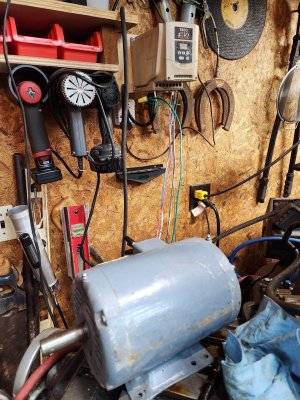For those who may be interested, the most important factors skipped in this math are the power factor and the difference between impedance and resistance. There are others too, but they are all likely to be within 'spitting distance' as t were.
If it was my motor, I would just hook it up and try it. Then post a picture / video of how it runs
If it was my motor, I would just hook it up and try it. Then post a picture / video of how it runs

